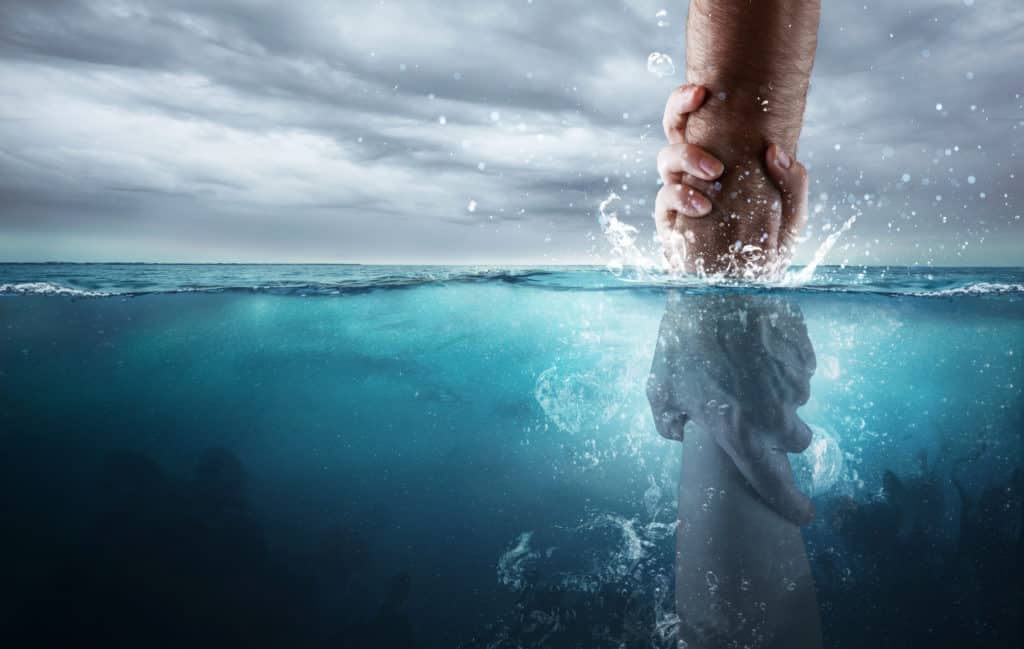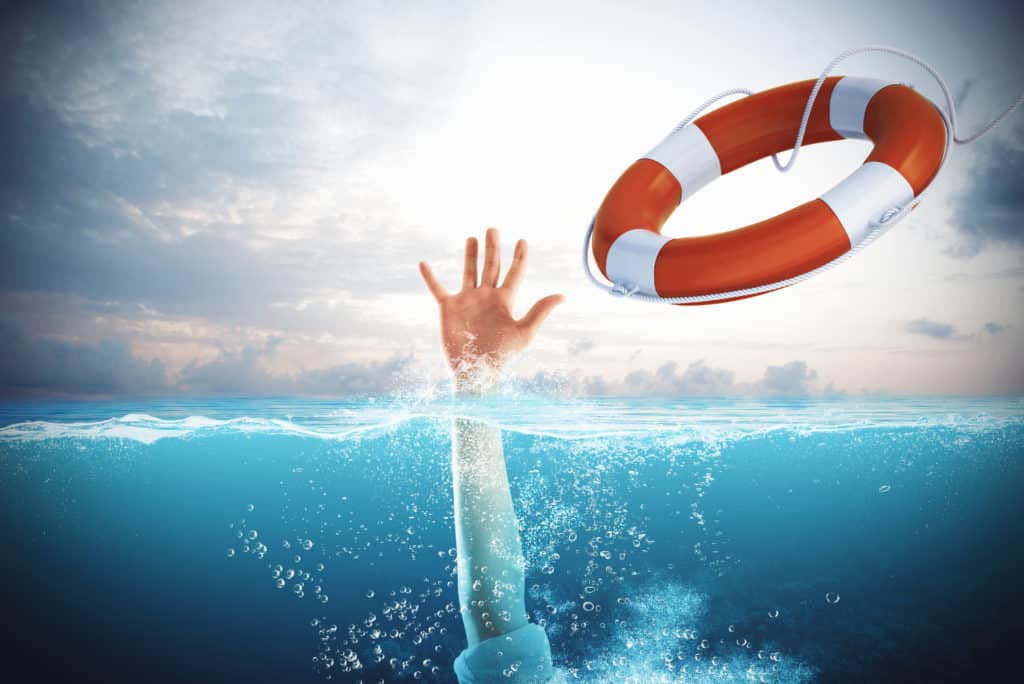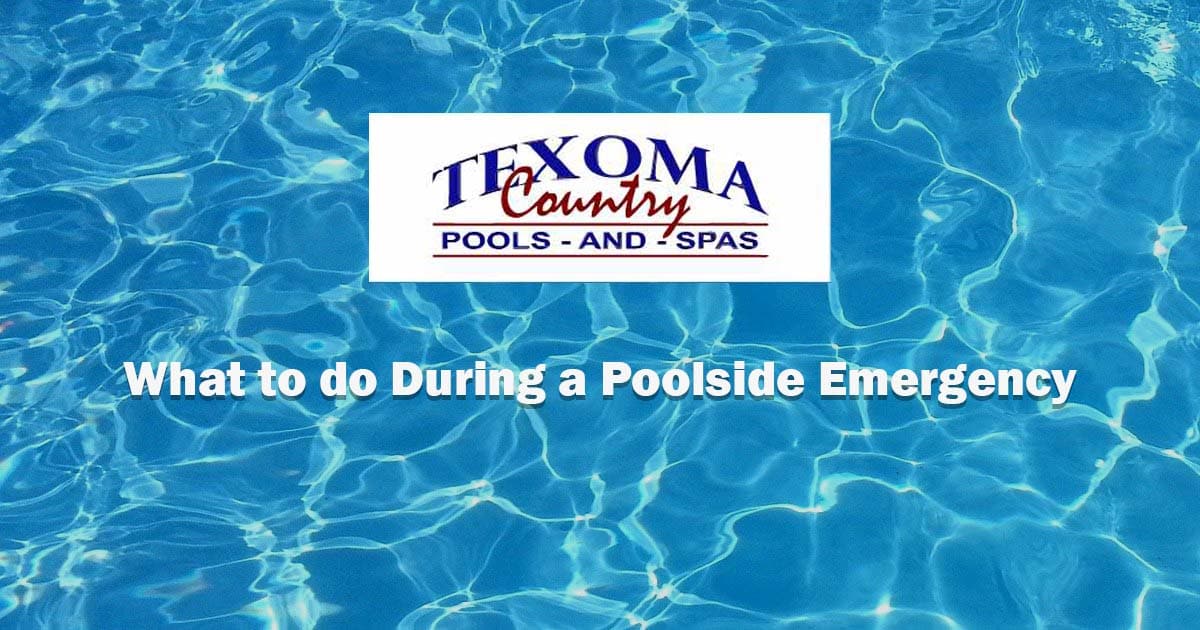There’s a certain risk that comes with owning a pool, and making sure your pool is safe is a constant concern for pool owners. However, despite your best efforts, accidents can happen, and some can be deadly if you don’t know what to do.
Drownings and submersion injuries are prevalent each swim season, and every pool owner must know what to do when a tragic event occurs in their pool.
Here are the things you should do if someone is drowning:
- Call 911.
- Move the person.
- Check for breathing.
- If the person is not breathing, check for a pulse
- If there is no pulse, start CPR.
- Repeat if the person is still not breathing.

CALL 911
If someone has had a drowning episode or has stopped breathing due to water submersion, immediately call 911 for help. If there happens to be a lifeguard on duty, alert the guard because they’ve had CPR training.
MOVE THE PERSON
If the victim is submerged in water and not moving, take the person out of the water and try to place them on a flat surface.
CHECK FOR BREATHING
After you have removed the victim from the water, place your ear next to the person’s mouth and nose and see if you can feel their breath on your cheek. Also, look to see if the person’s chest is moving up and down.
CHECK FOR A PULSE
If it appears that the victim is not breathing, check for a pulse for 10 seconds. To check for a pulse at the wrist, place two fingers between the bone and the tendon over your radial artery, located on the thumb side of your wrist.
IF THERE IS NO PULSE, START CPR
For an adult – Carefully place the victim on their back and start chest compressions with one hand on top of the other. Place the heel of one hand at the center of the chest near the nipple line and press down at least two inches. Some have said to sing the song “Staying Alive” by Bee Gees, pushing down for each beat. Let the chest rise between pushes.
Check the person again to see if they are breathing.
For a child – If a child isn’t breathing, you should start CPR with rescue breathing. Carefully place the child on their back and tilt their head back by lifting the chin. For older children, pinch the nostrils closed and breathe into the mouth. For an infant, place your mouth over both the infant’s nose and mouth, blowing into their mouth for only one second. The chest should rise and fall. Breathe into the infant’s mouth for a second time. Then it’s time for chest compressions.
Chest compressions are the same for older children, but the compressions should be two fingers on the breast bone for infants. Press down at least two inches for a child and one and a half inches for an infant.
REPEAT IF THE PERSON IS STILL NOT BREATHING
For an adult – If the victim still isn’t breathing, add two rescue breaths to the CPR cycle. Before doing this, open the airway by tilting the head back and lifting the chin. Now, you can offer to rescue breaths.
Pinch the nostrils close and take a normal breath into the victim’s mouth by creating an air-tight seal so your breath won’t escape before entering their lungs. After the two breaths, start 30 chest compressions. Keep doing this breathing and compression cycle until the person starts breathing again.
Note: These instructions are not meant to replace CPR training. Classes are available through the American Red Cross, local hospitals, and other organizations.

Swimming Pool Accident FAQ
What Safety Equipment Should I Have for My Pool?
- A first aid kit: A comprehensive first aid kit is necessary both for commercial and residential swimming pools. You should also take basic first aid and CPR training.
- Life jackets: These are essential in swimming pool safety for children and newer swimmers.
- Life hook: Also known as a “Shepherd’s crook” this simple rescue device is a must for pool owners.
- Safety ring: This circular, inflated safety device can be thrown to someone that is struggling in the water.
How Long Does it Take to Drown?
According to the CDC, more than 3,500 people drown every year in the United States, most of whom are children. Unfortunately, it takes very little time to drown, so pool owners must always be vigilant and make sure all children are accounted for at all times, and use gates to prevent unwanted access.
While the average person can hold their breath for about 30 seconds, children have less lung strength and can quickly get into trouble. Even excellent swimmers can usually only hold their breath for a minute or two.
Downing can occur in seconds, and brain damage or death can occur within 4 to 6 minutes without resuscitation. A person can drown in as little as a milliliter of fluid for every kilogram they weigh. There’s also secondary drowning, which can occur hours after a near-drowning incident.
It’s important to seek emergency care ASAP after a near-drowning incident, even if the victim seems physically okay.

















